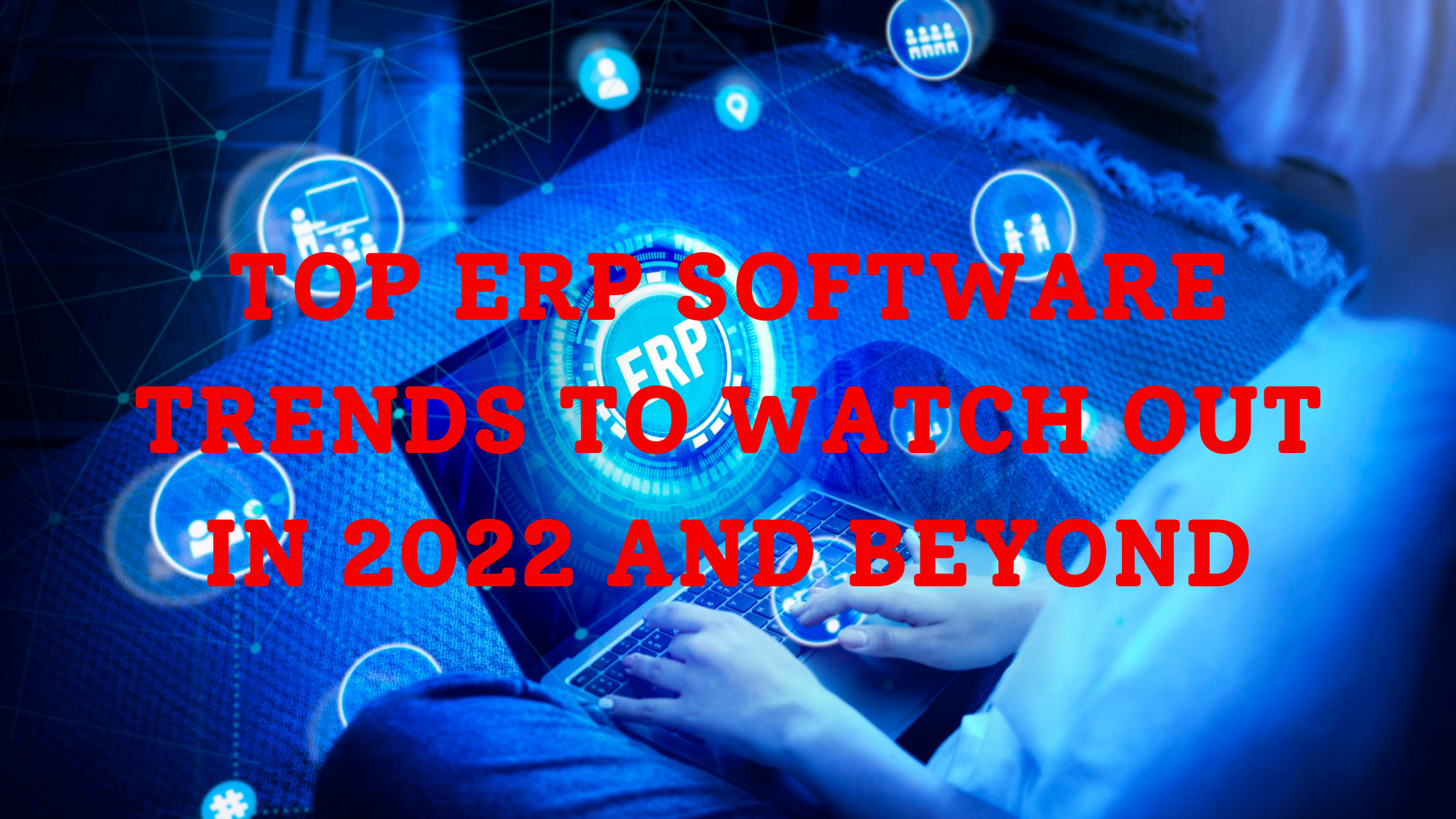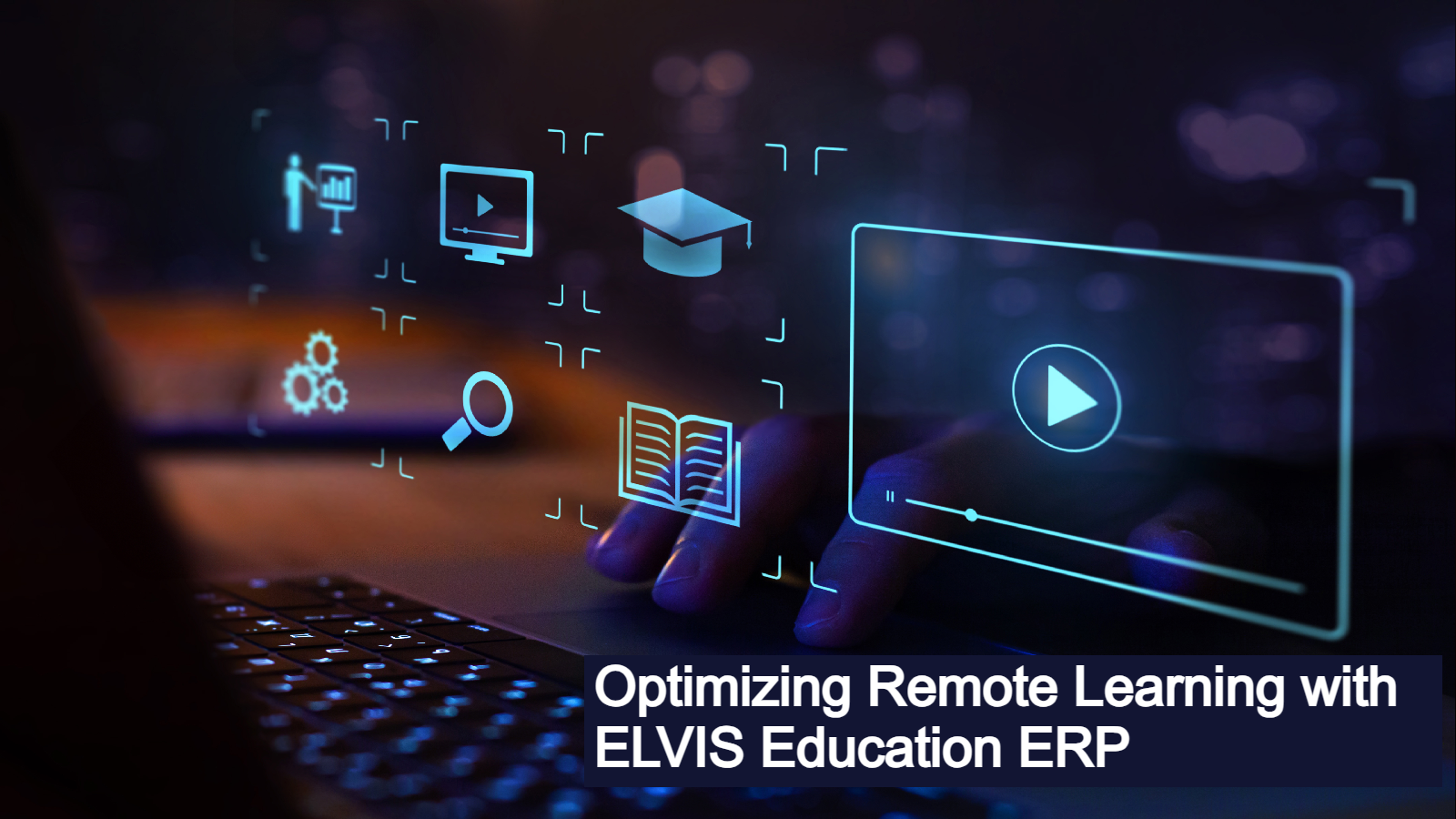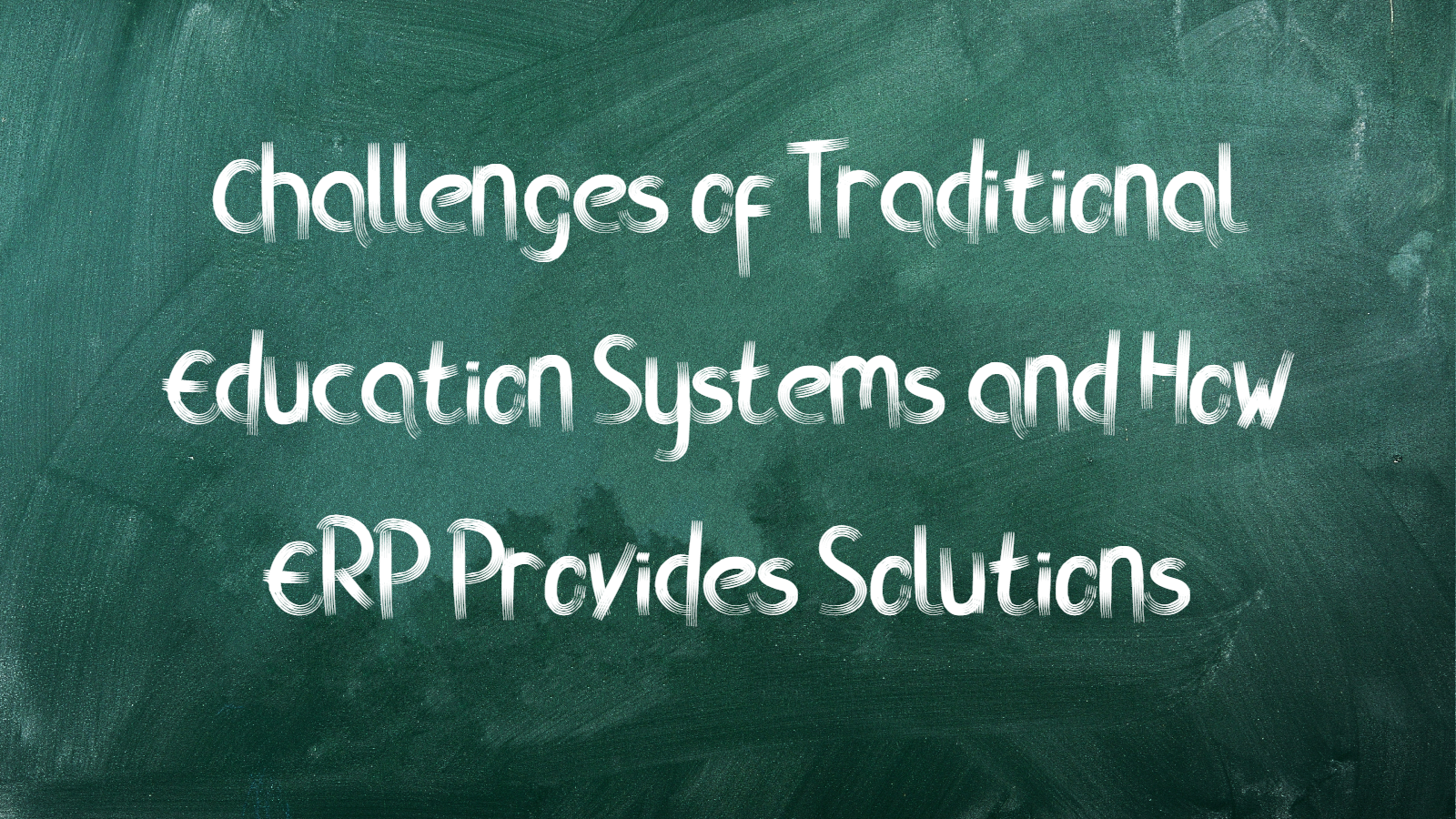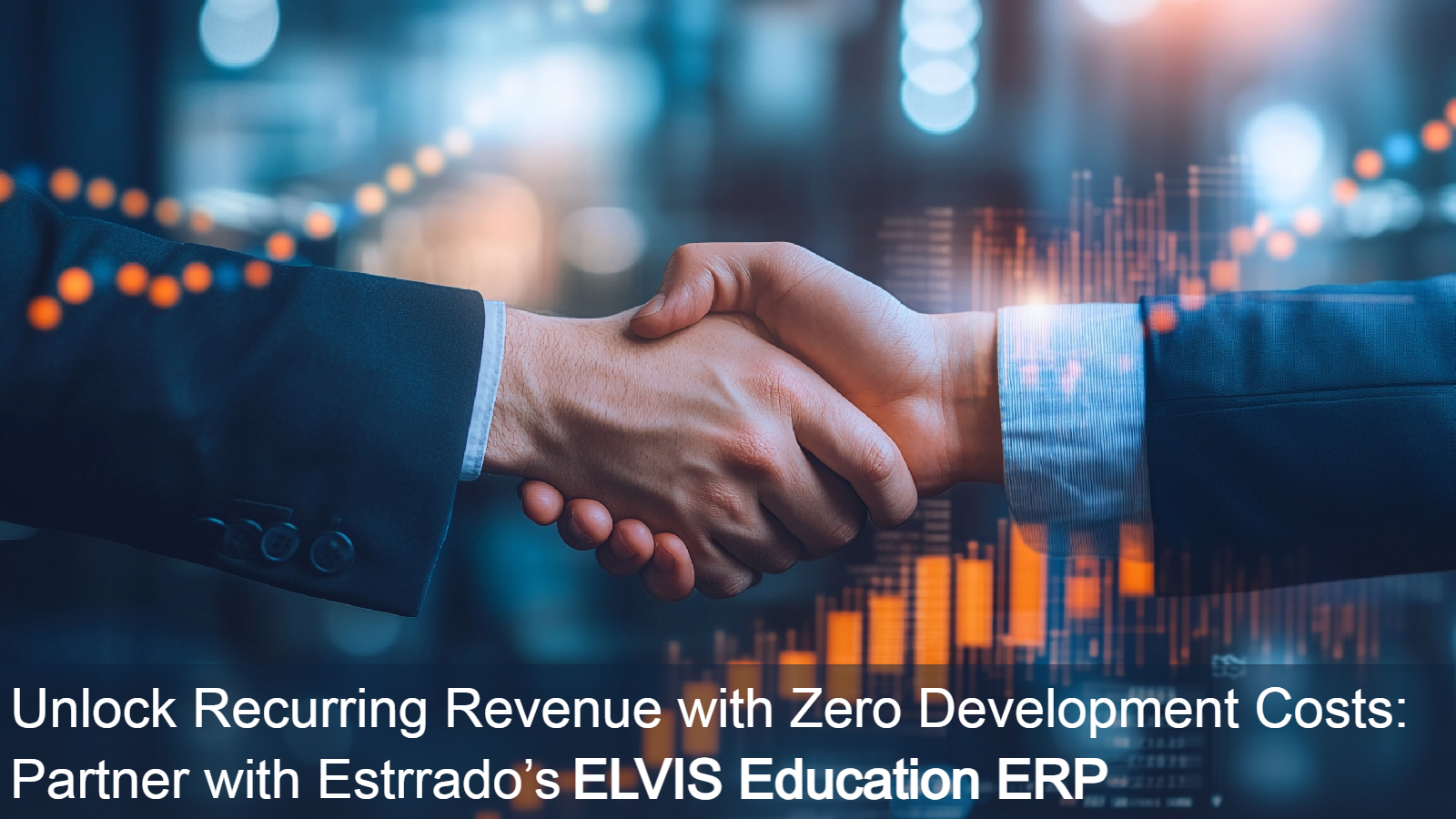Top ERP Software Trends To watch out in 2022
ERP, like technology, is evolving at a rapid pace (Enterprise Resource Planning). ERP systems can aid in the management of a company’s flow, from purchasing to sales, accounting, and human resources, as well as marketing. ERP has evolved over the last four decades as buyer behavior, market conditions, competitions, and technical breakthroughs have all changed. Enterprises may achieve excellence in their operations and reach their financial goals with ease thanks to the new age ERP. There has been a significant progression and innovation of enterprise resource planning as organizations expand, from a basic MRP (Material Requirement Planning) system, which is used for inventory management and raw materials procurement, to the contemporary ERP. To satisfy the expanding demands of customers and create a competitive advantage, firms now utilize multi-functional and extended ERP software that is capable of providing accurate data, personalized customer interactions, and enhanced automation.
The ERP platform’s trends are still growing, and most of them are aimed at improving ERP systems and their implementation. As your business grows, ERP will need to develop as well. As a result, it is vital for businesses to keep an eye on ERP trends and changes, as this will enable them to react to the latest ERP trends and use them properly to increase outcomes as needed. Here are some of the most recent ERP developments to keep an eye on in 2022, which will help you run your business more efficiently.
- Domination of AI
- Cloud acceleration
- Three-tier ERP
- Mobile application
- More powerful analytics
- 3D printing
- Personalized ERP solutions
- Attention to digital marketing
- IoT enabled ERP platforms
- Financial support system
Domination of AI
Artificial Intelligence (AI) has played a significant role in the organization’s ERP transformation. Previously, it was thought that computers will eventually replace people, resulting in job losses. Human labor, on the other hand, can now be done with the aid of advanced technology. Nowadays, even automobiles can drive themselves. The true purpose of AI is to automate workflows with as little human interaction as possible. AI can help you reduce inefficiencies and increase production in your company. The incorporation of AI and machine learning into ERP software has resulted in the development of intelligent systems that turn processed data into overall improvement.
Intelligent ERP can optimize operations, shorten lead times, and eliminate data import and processing errors. AI-based solutions can leverage the data provided by the system to aid launch effective decision-making by assisting in the detection of faults or shortcomings before they cause a business disruption. RPA (Robotic Process Automation) is another innovation in incorporating automation into software systems that has changed business processes. ERP systems that incorporate bots and automation tools aid in the completion of repetitive operations such as onboarding, data collecting, and so on, and allow users to focus on value-added activities while increasing business productivity. The AI-based ERP helps with not only fundamental operations like credit analysis, digital marketing, targeted customer support, and product configuration recommendations, but also more complex jobs like production and scenario planning, offering strategic insights.
The year 2022 is expected to have a significant impact on AI-based ERP platforms. Google, Microsoft, and Amazon’s bundled AI toolkits, as well as open source versions, will help operations keep up with the competition.
Cloud acceleration
Although cloud-based ERP software is not a new trend, it is one of the most advanced technologies available. Since the pandemic, cloud ERP systems, often known as SaaS ERP software, have gained a lot of traction due to their ease of use, low deployment costs, and expanded collaborative features. The demand for cloud-based ERP technologies is rapidly increasing since they allow for real-time data access, remote working, and excellent data security.
SaaS ERP systems have taken over the IT market as a result of the success of cloud adoption. Cloud-based ERP software does not require a large upfront investment, complex technical infrastructure, or extensive resources, making it an attractive option for SMEs (Small and Medium Enterprises). By 2025, the cloud ERP market is estimated to rise to $101.1 billion. Businesses opting for hybrid ERP solutions are also in high demand. While 51% of chief information officers (CIOs) choose cloud ERP and 35% prefer on premise solutions, 10 percent of firms already utilize hybrid ERP technologies, which is expected to rise in the coming years, according to Accenture’s 2019 ERP Trends.
The main reason for cloud ERP adoption is the ability to access a multinational company’s ERP from anywhere in the world. This sort of solution combines the advantages of both on premise and cloud-based ERP while compensating for each other’s shortcomings. Cloud services now account for one-third of the company’s IT spends. In the coming years, cloud-based ERP is likely to offer additional customization options and functionalities.
Three-tier ERP
Multi-tier designs, often known as n-tier structures, are becoming more common in ERP applications. In a connected network, a three-tier ERP is spread among three or separated devices. In a network, the application logic, database, and user interface are all stored independently in three connected devices. The ripple implementation of ERP inside the organization is referred to as three-tier ERP. The “legacy application,” which is used at the corporate level, is the first tier. Tier two is handled by subsidiaries, who will optimize their regional back offices at the tier two levels to best meet their needs (regional business models, language, etc.) while connecting to the tier-one system at the corporate office. The administrative or managerial level manages the third tier, which integrates communication between all three tiers. Not only is ERP becoming three-tiered, but new software programs are focusing on topics such as digital transformation, ERP’s final mile, and other topics. Companies use three-tier ERP systems when they want to:
-
- A small subsidiary grows large enough to need ERP software.
- There is a subsidiary that has been in need of an ERP system.
- An acquired company’s ERP system is outdated or unsupported.
- A subsidiary’s industry is not strongly featured at the corporate level.
Three-tier systems are more scalable, fast, secure, adaptable, and durable, and they can incorporate data from numerous sources, making them an ideal choice for growing businesses.
Mobile application
Although mobile ERP, like cloud ERP, may not be a new trend in 2022, it is predicted to grow and improve in the next few years. One of the fundamental characteristics of a modern ERP program would be extensive and reliable mobile support. In this competitive environment, mobile ERP is a game-changer for every company. For example, salesmen must contact clients outside of the office, which necessitates equipping them with the capacity to examine real-time sales numbers and stock information from their mobile device, which is critical in closing agreements. Employees, suppliers, and stakeholders will benefit from an ERP system that is responsive to many platforms and devices since it keeps them linked even when they are on the road.
The ability to access real-time data is one of Mobile ERP’s main advantages. Mobile tools provide for efficient and real-time data collecting from the source. Companies need this rapid and accurate data flow in order to make smarter, more informed business decisions. In terms of customer relationships, processed real-time data enables businesses to enrich the Customer Experience (CX) by bringing together relevant data and personalized recommendations from many departments and sources.
Apart from data accessibility, ERP platforms that use a mobile strategy provide a slew of advantages. One of its characteristics is the ability to conduct company operations at any time and from any location. This means that mobile devices such as tablets and smartphones may access both the back-end and front-end operations. The total productivity will benefit as a result of this. Due to improved communication, mobile ERP also decreases the danger of production delays. Other advantages that organizations can take advantage of include faster decision-making, improved workflow, and increased efficiency.
More powerful analytics
In terms of data collection and organization, ERP systems have always been excellent. However, when it comes to reporting and analytics, it’s a different storey. However, the contemporary ERP has undergone a significant transition because it is now loaded with robust data analytics tools. Cloud ERP vendors now have a new revenue stream thanks to big data and analytics. Businesses are prioritizing the capacity to make data-driven decisions rapidly, and they are looking for analytics-based solutions to help them do so. According to a poll, companies that use analytics are twice as likely to perform well financially, five times more likely to make timely decisions, and three times more likely to execute those decisions and plans efficiently.
Most firms now have ERP systems that include integrated analytics, ad-hoc reporting, and data visualization. This allows them to get real-time access to the information they need. Companies then utilize it to make critical business decisions about finances and other aspects of their operations. From the production division to the executives, decision-making is now possible at all levels. ERP users should anticipate improved analytics and reporting capabilities. ERP’s future appears to be an end-to-end solution that can handle both structured and unstructured data. This means that ERP administrators will have to focus on another process: learning how to use big data analytics. All data from multiple departments will be accessible through ERP platforms. As a result, they have all of the data they need to forecast future trends. As a result, modern ERP software excels in predictive analysis.
3D printing
3D printing, also known as “three-dimensional printing,” “additive manufacturing,” or “AM,” is revolutionizing the way manufacturers create complicated and intricate processes like engines and motors. Printers aid in the improvement of parts, cost reduction, and increased efficiency, allowing vast quantities of well-made products to be manufactured inexpensively and swiftly. Previously, plastic filament printing was used. However, today’s engineers may use three-dimensional printers to create rapid prototypes for metal components. Automotive, consumer electronics, healthcare, and other industries have already begun to benefit from this technology. 3D printing is used to make hearing aids, turbine blades, coffee mugs, candies, and human tissues, among other things.
Because of the fierce competition among aerospace and defense firms, any new, proven technology that might give them a significant competitive advantage is easy to embrace. 3D printing is a critical technology for any large, serious manufacturing organization because of its capacity to swiftly and efficiently build individual, specialized parts. Contractors in the aerospace and military industries create cutting-edge aircraft and other goods. Large corporations do not move quickly, but they do make the required changes over time. BAE Systems was the first aerospace and defense sector to employ 3D printing in 2017, producing its first 3D-printed parts for military jets. Since then, more aerospace and defense companies have begun to utilize 3D technology, following BAE Systems’ lead. The only disadvantage of 3D printing is data management, as it generates a large amount of data at each stage of manufacturing, requiring software to handle a large amount of data.
Personalized ERP solutions
Small firms can now benefit from a modular approach to ERP, comparable to cloud ERP systems. Beginning in 2019, the trend accelerated by providing more individualized and specialized solutions to businesses. In 2022 and beyond, one-size-fits-all ERP solutions will be obsolete. Customers saw the benefits of giving most control over their systems, therefore this developed. They’ll also be able to get the custom solution they desire without relying on IT. Firms will be able to cut their capital and operating costs as a result of this. Every business procedure will be standardized, ensuring that the deployment process is not hampered by the enhanced flexibility.
In the coming years, ERP solutions will feature a more comprehensive user interface. They’ll become more customer-centric, adaptive, and accessible as well. The tools will become straightforward to use not only for programmers and IT specialists, but for all employees. Furthermore, customized ERP component solutions may be able to work in tandem with these enhancements. By permitting the introduction of new models and procedures, this has the potential to change the ERP environment.
Attention to digital marketing
Marketing isn’t the first thing that pops to mind when it comes to erp software trends. There is, however, a digital marketing aspect to this. Digital marketing principles must be used by organizations that seek to gain a competitive advantage in the modern world. Marketing requires the use of technology to track results in addition to producing unique and enticing campaigns. The correct data will assist establish the best target audience, and analytics will help identify the components of the campaign that are lacking. This is where enterprise resource planning (ERP) comes into play.A marketing campaign that couldn’t get data from the ERP system would be missing important indicators. It also helps marketers create a strategy using CRM and other tools. As a result, businesses are integrating their marketing operations with their enterprise resource planning (ERP) systems.
Another important aspect of digital marketing is the integration of social media sites into ERP applications. Millions of people will be utilizing social media by 2020, with a global utilization rate of 49%(Statista, 2021). As a result, companies who previously dismissed social media as a professional industry are starting to recognise its worth. As a result, we may see more ERP solutions that combine marketing skills with various social media sites. Gathering links, producing posts, and acquiring social media analytics are just a few of the chores. Social media will affect the future of ERP systems’ digital marketing functions.
IoT enabled ERP platforms
“Direct machine integration” is a term used to describe the Internet of Things, or IoT. Computers’ ability to communicate with other equipment and objects is referred to as this technology. Sensors on industrial equipment, for example, can send real-time data about the machine’s operation to the ERP software of the manufacturer. The foreman or manager looks at the data and interprets it. He then schedules any required maintenance during non-payable hours when no one is on site. There are considerably fewer unexpected problems and shutdowns when IoT and ERP are coupled.
Financial support system
One of the most important features of a contemporary ERP system is the financial module. It includes features like general ledger, currency management, payroll management, fixed assets management, cash management, and more. It’s also in charge of generating financial reports for several departments. These are only a few of the critical services that ERP provides to a company’s finance and accounting departments. However, in recent years, the financial module has become more involved in both internal and external business activities. For example, it keeps track of all transactions and combines them with data from other modules to determine the financial impact of certain purchases.
Nonetheless, access to more powerful analytics is one of the key reasons why ERP’s position in finance is evolving. Modern ERP solutions’ analytics, whether built-in or add-on, enable quick decision making and plan execution. It enables accounting, finance, and planning departments to respond to any scenario quickly and effectively, as well as adapt to operational changes. Finance experts are highly interested in ERP systems’ innovation, particularly in the field of analytics. ERP solutions are always upgrading their data analytics as a result of this, allowing them to provide faster and more powerful services. Managing financials electronically is now achievable with the help of current ERP technologies, allowing executives to keep a close check on their company’s day-to-day performance (Acumatica, 2020).
FINAL THOUGHTS
We are all living in a technologically advanced world where interoperability, agility, and hyper-connectivity are critical characteristics for ERP systems. Small and medium-sized businesses have begun to recognise the true value of an ERP system, which will lead them down the road to creating a dynamic, data-driven, and multi-dimensional corporate environment. Organizations of all sizes and types are looking for ways to be agile in today’s highly competitive environment. Businesses must adapt to changes in the technology environment in order to manage risk and maintain business continuity and growth. Finally, in today’s fast-changing business scene, any corporate organization must immediately consider implementing a modern-age erp software trends with the features that will assist in fulfilling strategic organizational goals and reaching new heights.








